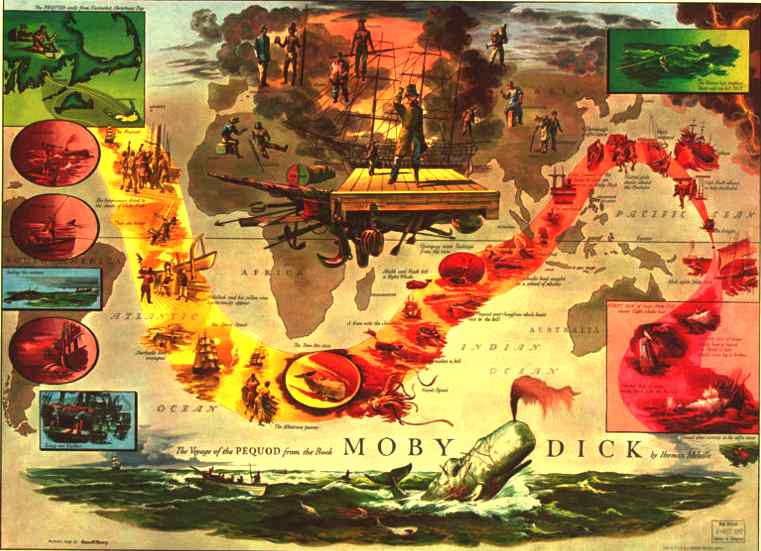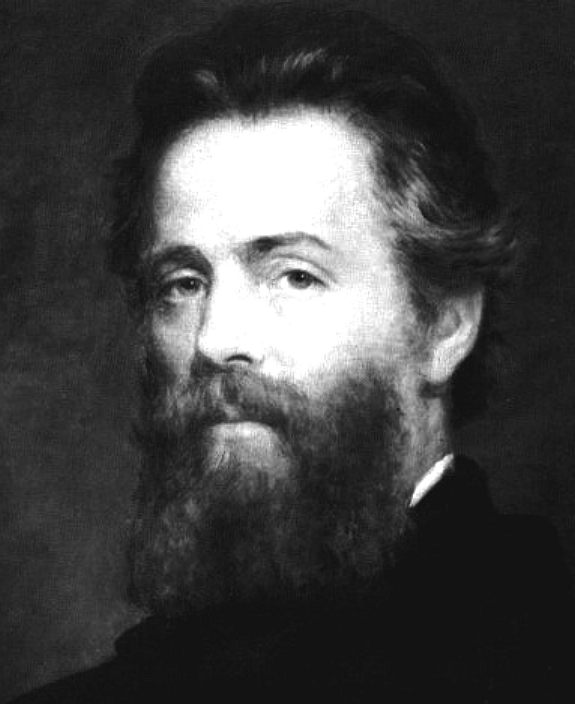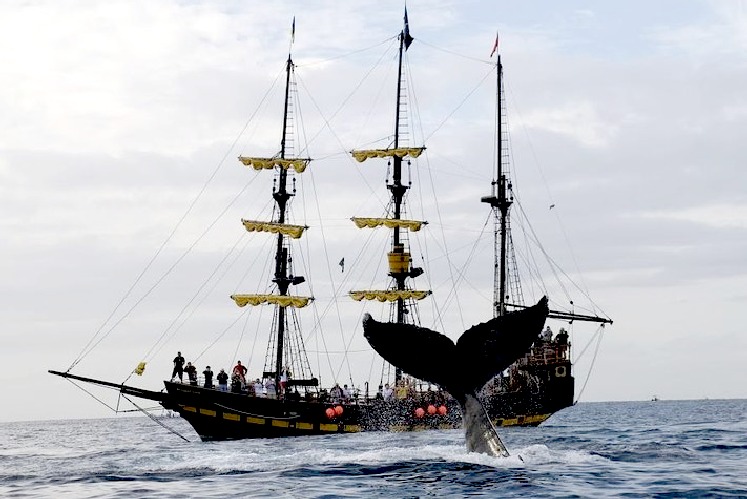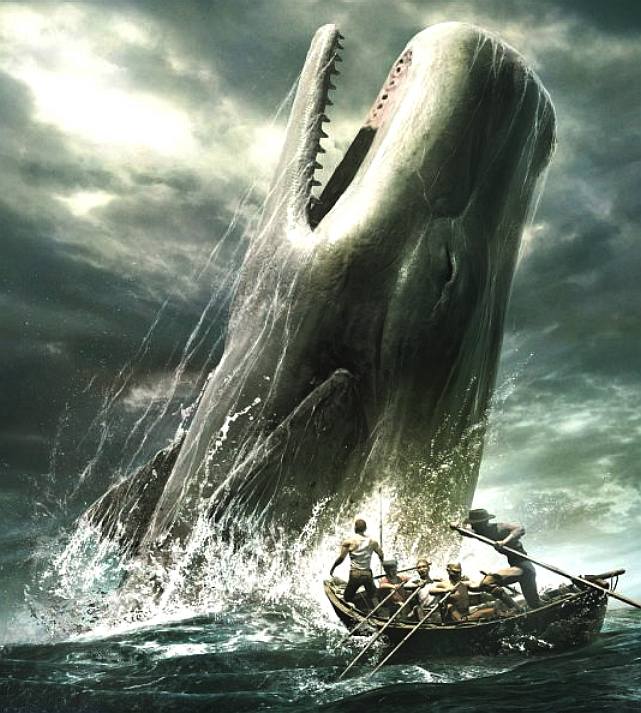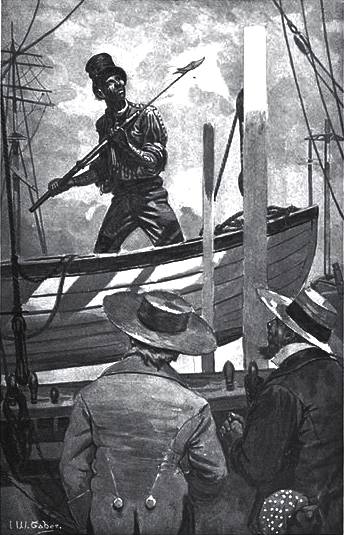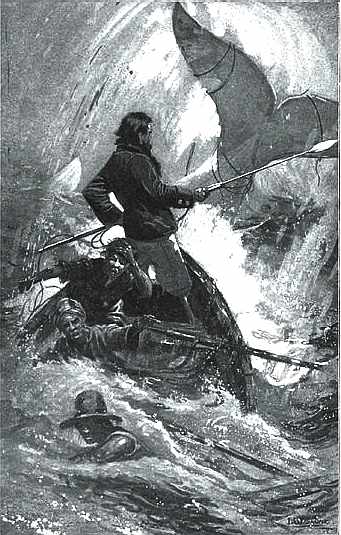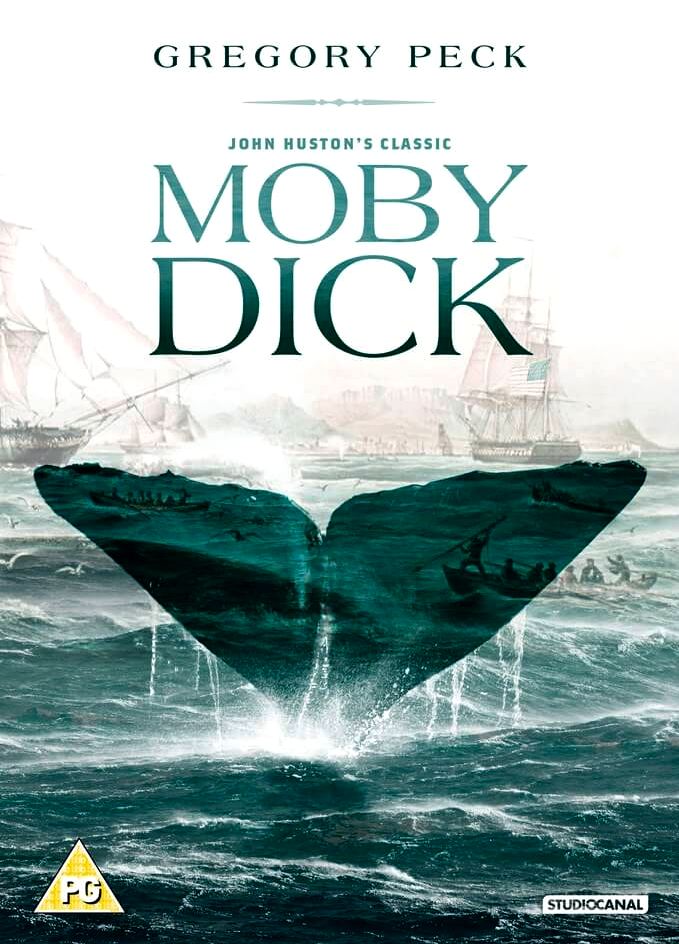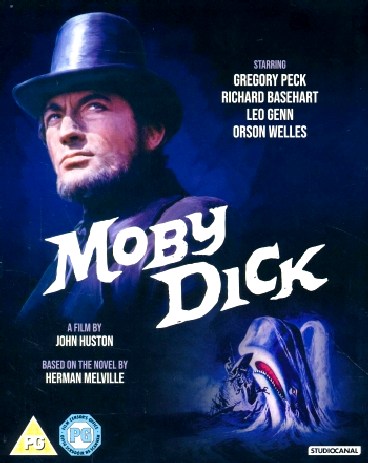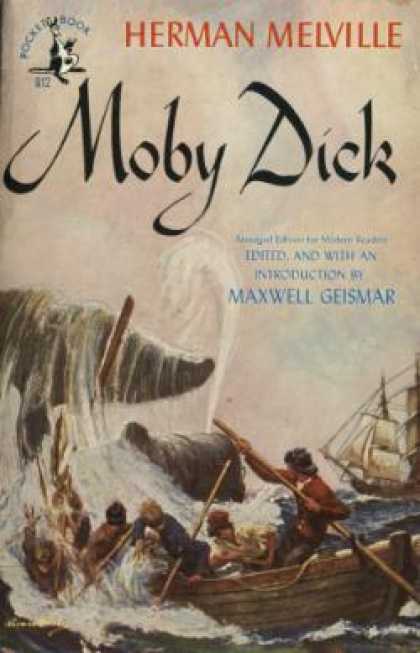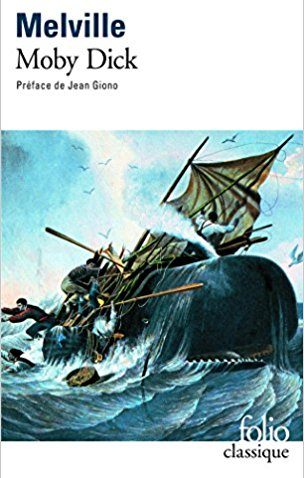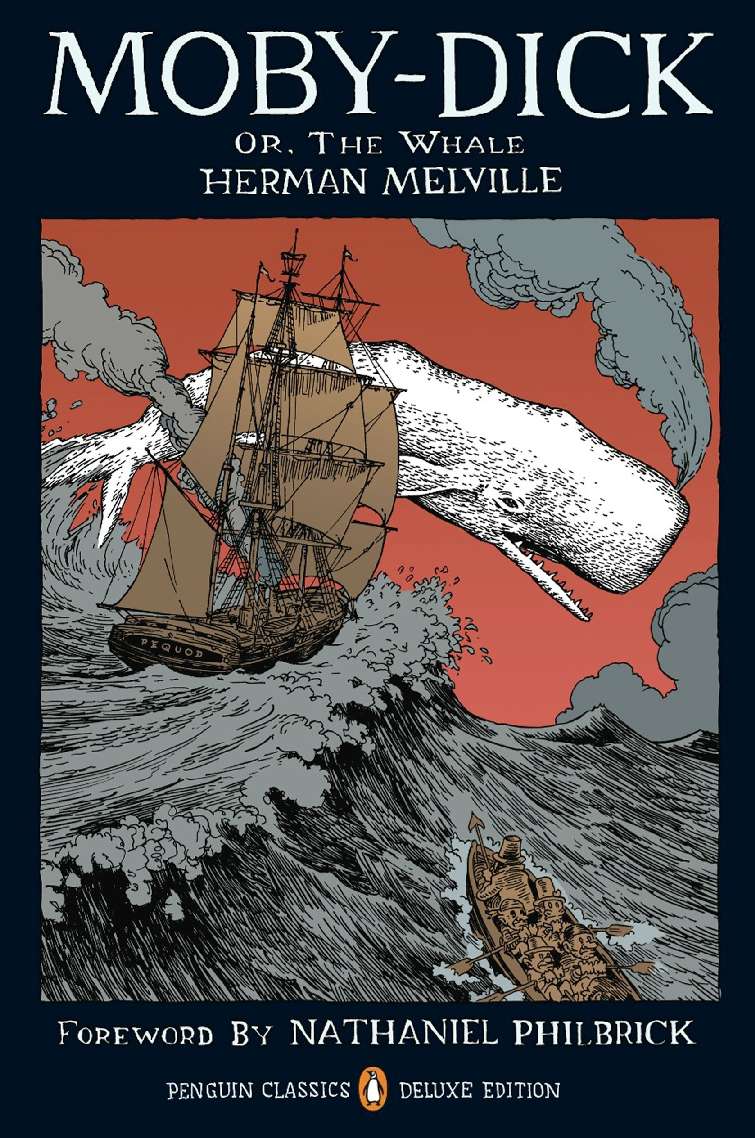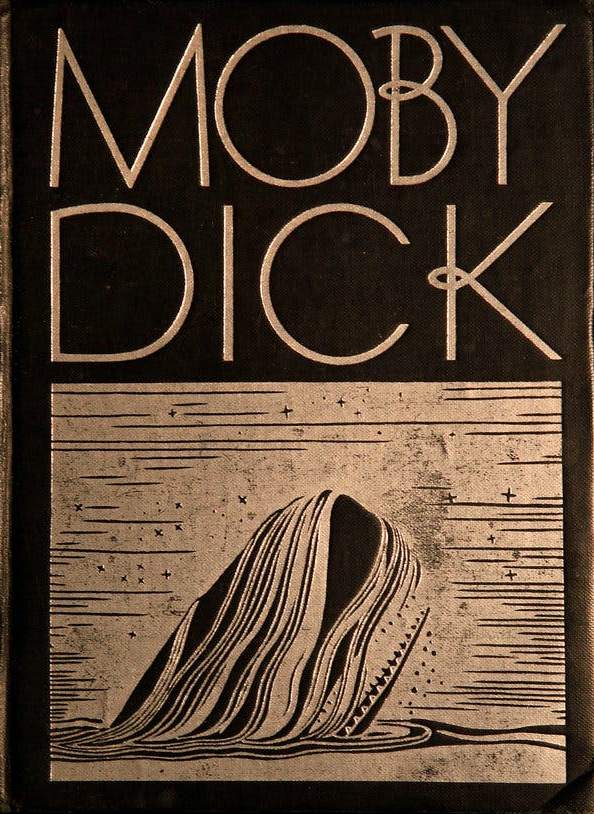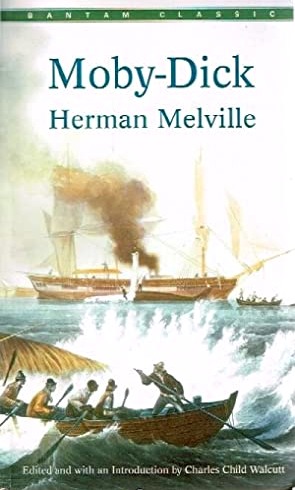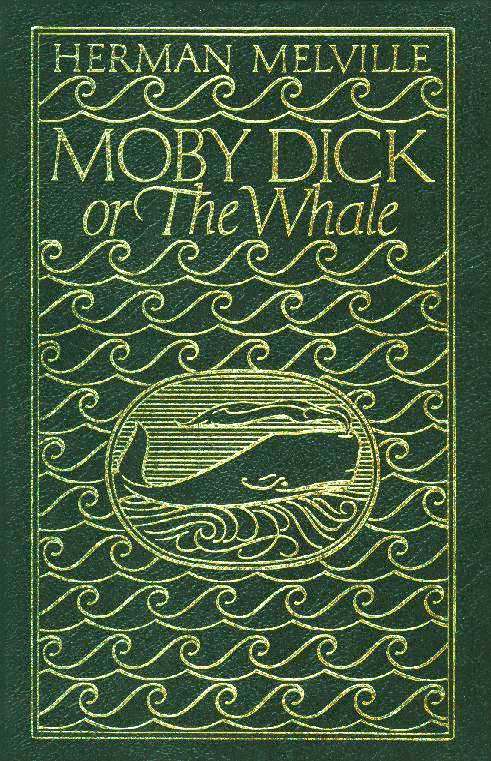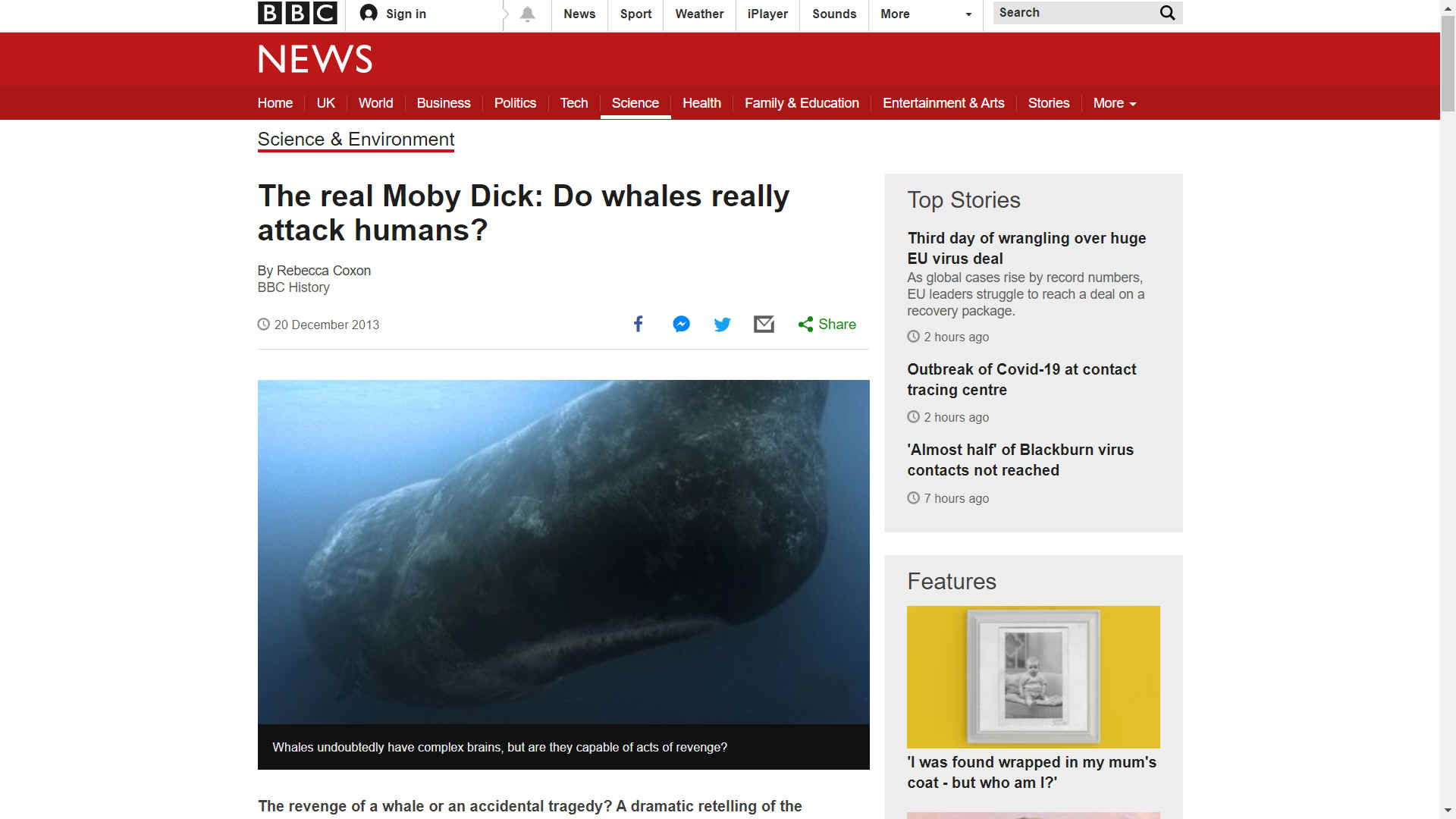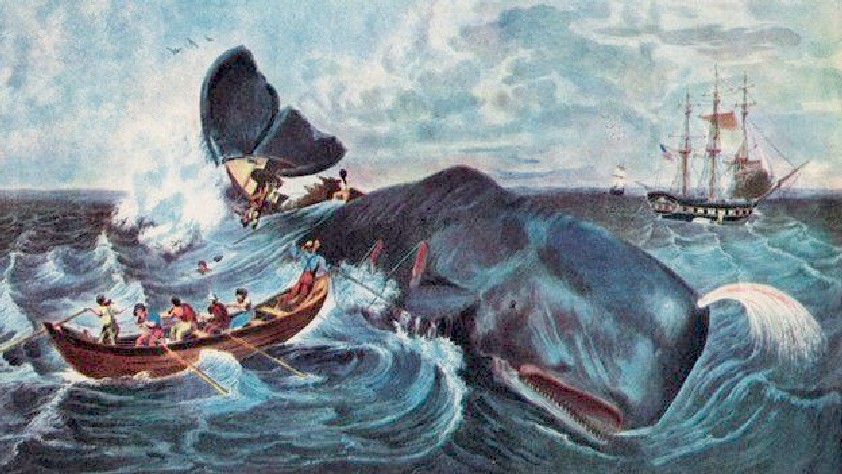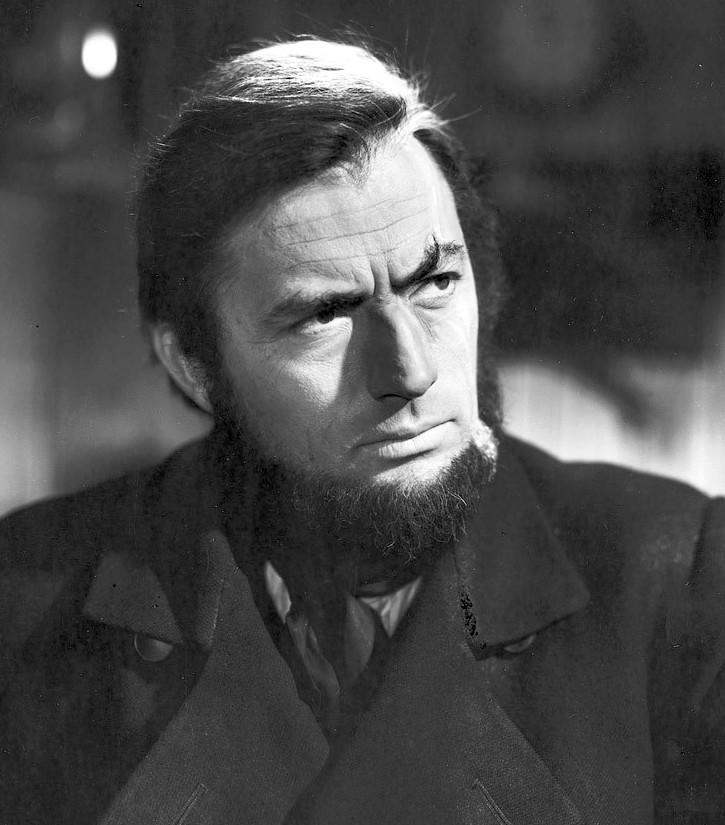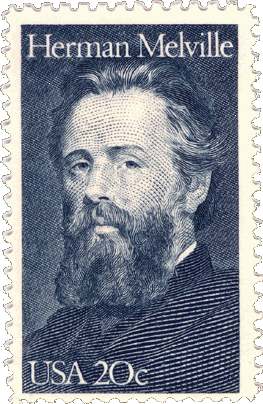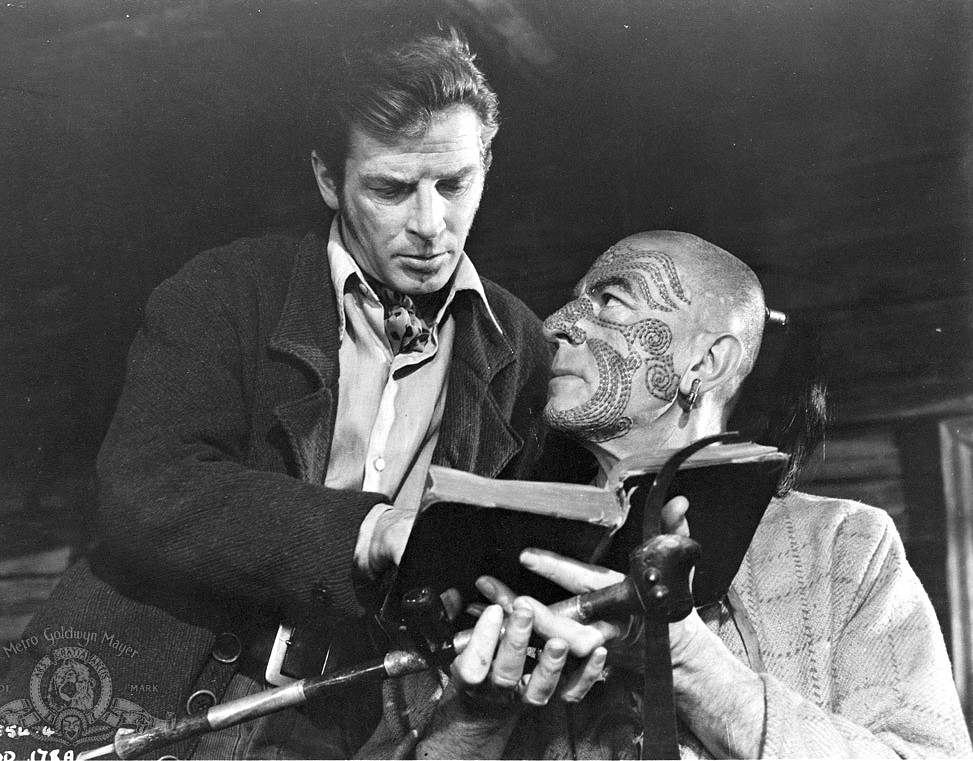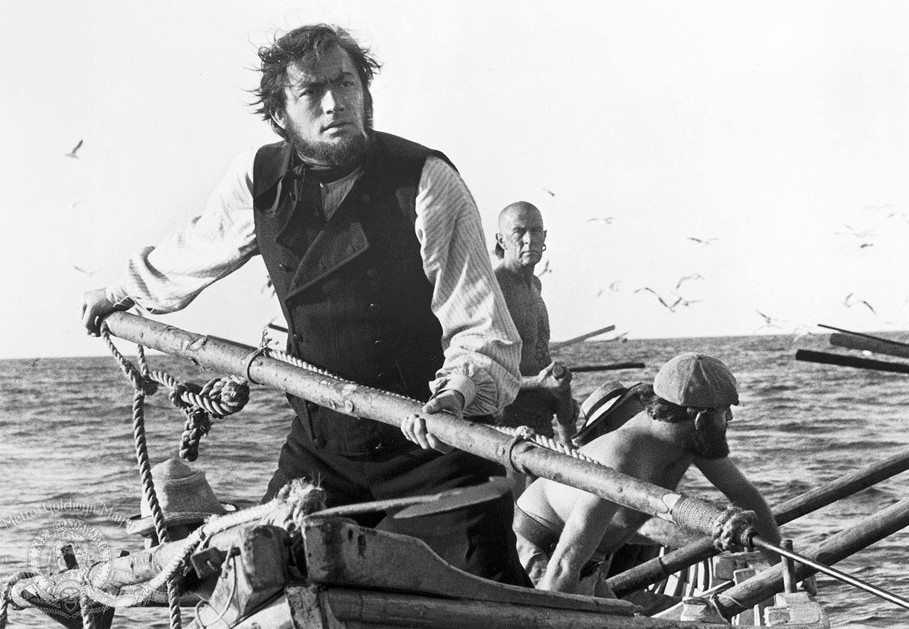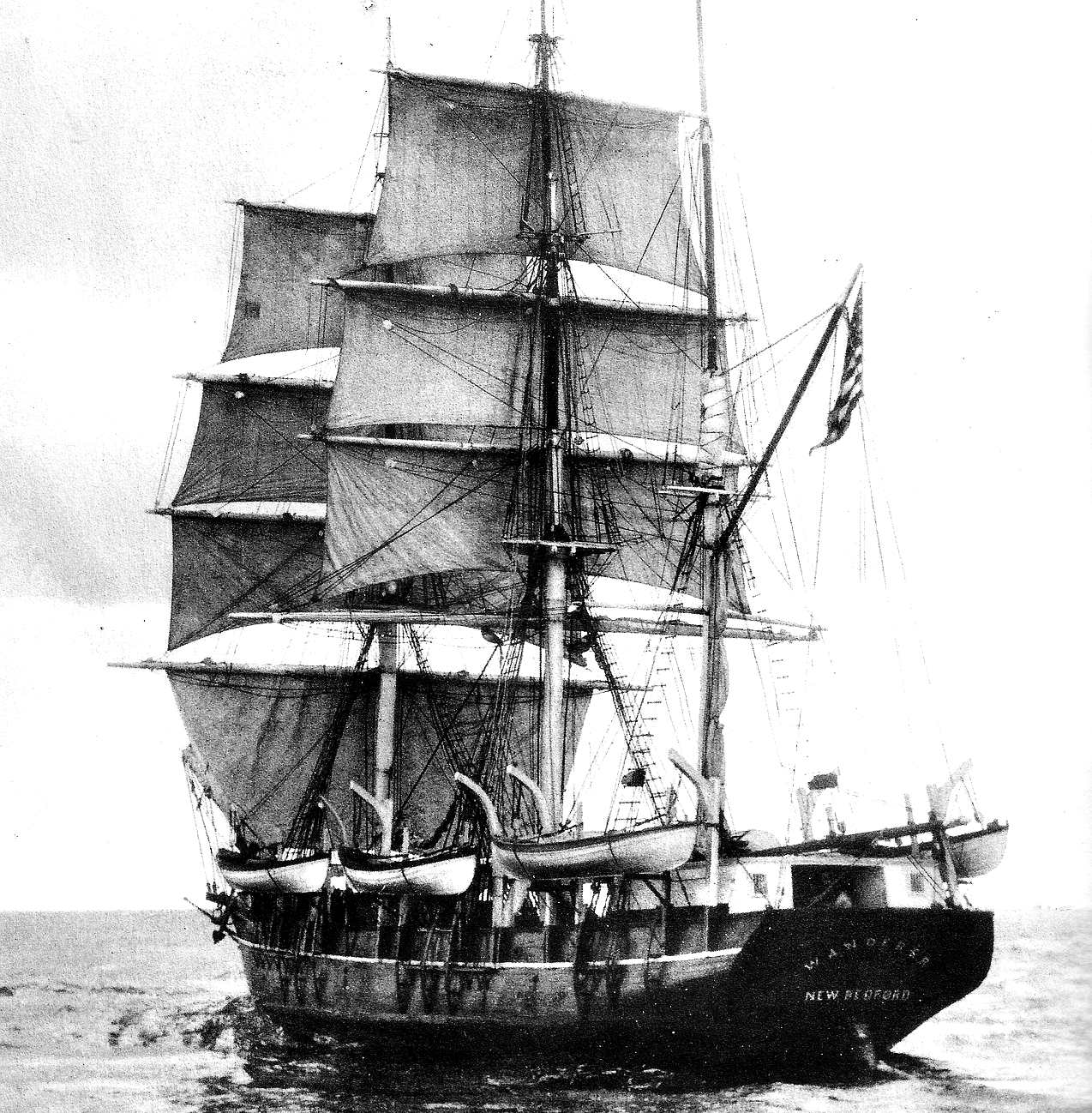|
MOBY DICK - HERMAN MELVILLE
Please use our A-Z INDEX to navigate this site, or flipper HOME
|
|||||||||||||||||||||||||||||||||||||||||||||||||||||||||||||||||||||||||||||||||||||||||||||||||||||||||||||||||||||||||||||||||||||||||||||||||||||||||
Map of the voyage of the Pequod, during Captain Ahab's obsessive chase around the world.
MOBY DICK or THE WHALE
'Moby-Dick;' or, 'The Whale' is an 1851 novel by American writer Herman Melville. The book is the sailor, Ishmael's, narrative of the obsessive quest of Ahab, Captain of the whaling ship Pequod, for revenge on Moby Dick, the giant albino (white) sperm whale that on the ship's previous voyage bit off Ahab's leg at the knee.
A contribution to the literature of the American Renaissance, Moby-Dick was published to mixed reviews, was a commercial failure, and was out of print at the time of the author's death in 1891. The writer has given one and a half of the best creative years of his life to developing this story. Melville was devastated.
Its reputation as a "Great American Novel" was established only in the 20th century, after the centennial of its author's birth. William Faulkner said he wished he had written the book himself, and D. H. Lawrence called it "one of the strangest and most wonderful books in the world" and "the greatest book of the sea ever written".
Its opening sentence,
"Call me
Ishmael", is among world literature's most famous.
The white whale is modeled on the notoriously hard-to-catch albino whale Mocha Dick, and the book's ending is based on the sinking of the whaleship Essex in 1820, where the bull sperm whale in that account smashed the rowing boats and slapped its tail as a weapon to dispatch the whalers who had been throwing harpoons, so disarming them in an intelligent manner, that would have got the sailors thinking they'd met a devil adversary.
The book inspired Warner Brothers to make a film with John Barrymore in 1930, followed by another production with Gregory Peck in 1956. Plus a couple of TV series. The book partly inspired Jameson Hunter to develop a story where a humpback whale is pushed to retaliating. Hence this website.
The sinking of the Essex was made into a film in 2015, featuring cannibalism, one of the taboos that kept the story from being told as a movie for so long. This film is very true to life as far as the attack on the whaling ship. It is not overly dramatised, but rather plays the event down, such that audiences are left feeling wanting - rather like the sailors must have felt when they were forced to abandon ship.
Melville's literary influences most obviously include Shakespeare and the Bible, thus incorporating both Biblical and Shakespearian phraseology. The detailed and realistic descriptions of whale hunting and of extracting whale oil, as well as life aboard ship among a culturally diverse crew, are mixed with exploration of class and social status, good and evil, and the existence of God. As one might expect from a middle class man forced to work on ships to support his family.
In addition to narrative prose, Melville uses styles and literary devices ranging from songs, poetry, and catalogs to Shakespearean stage directions, soliloquies, and asides. It is the stage directions that struck us as being script like and very effective.
In August 1850, with the manuscript perhaps half finished, he met Nathaniel Hawthorne and was deeply moved by his Mosses from an Old Manse, which he compared to Shakespeare in its cosmic ambitions. This encounter may have inspired him to revise and expand Moby-Dick, which is dedicated to Hawthorne, "in token of my admiration for his genius".
The book was first published (in three volumes) as The Whale in London in October 1851, and under its definitive title in a single-volume edition in New York in November.
The London publisher, Richard Bentley, censored or changed sensitive passages; Melville made revisions as well, including a last-minute change to the title for the New York edition and an extra chapter to explain how it came to be that Ishmael survived to tell the tale.
The whale, however, appears in the text of both editions as "Moby Dick", without the hyphen. Reviewers in Britain were largely favorable, though some objected that the tale seemed to be told by a narrator who perished with the ship, as the British edition lacked the Epilogue recounting Ishmael's survival - hence the revision. American reviewers were more hostile. About 3,200 copies of the book were sold during the author's life.
MODERN MOBY DICK
Though not a re-telling of the classic tale, in that the protagonist John Storm is trying to save Kulo Luna, the $Billion Dollar Whale, the concept of a whale sinking a whaling ship is at the heart of the Jameson Hunter story development, such that it may please readers who are familiar with the original work of Herman Melville.
'Call me Ishmael.' So begins Herman Melville's masterpiece, one of the greatest works of imagination in literary history. As Ishmael is drawn into Captain Ahab's obsessive quest to slay the white whale Moby-Dick, he finds himself engaged in a metaphysical struggle between good and evil. More than just a novel of adventure, more than an paean to whaling lore and legend, Moby-Dick is a haunting social commentary, populated by some of the most enduring characters in literature; the crew of the Pequod, from stern, Quaker First Mate Starbuck, to the tattooed Polynesian harpooner Queequeg, are a vision of the world in microcosm, the pinnacle of Melville's lifelong meditation on America. Written with wonderfully redemptive humour, Moby-Dick is a profound, poetic inquiry into character, faith, and the nature of perception.
GRAPHIC NOVEL
The graphic novel translation of Kulo Luna, omits many of the above chapters (in grey) entirely, and condenses others, aiming for a lively visual read. The length of Moby Dick is one reason for it's commercial failure, generating umpteen concise editions - and even those can be daunting. A gentler way of getting into Herman Melville's Mob-Dick is via one of the many graphic novel versions that are now in print, numbering at least six as we write.
BBC: THE REAL MOBY DICK - DO WHALES ATTACK HUMANS DEC 2013
The revenge of a whale or an accidental tragedy? A dramatic retelling of the story that inspired Herman Melville's classic novel will be hitting our screens on BBC One this Sunday - but do whales really attack humans intentionally?
Whale Oil - Used to lubricate machinery and provide illumination by burning it in lamps.
In 1820, a giant sperm whale, apparently 85 feet long (the average is 50ft) attacked a whaleship named the Essex, causing her to sink. Her crew were left adrift in three whaleboats (lighter boats used in the capture of whales) thousands of miles from land.
Moby Dick was actually named after a real whale,
Mocha
Dick, first spotted by sailors in the 19th century near the island of Mocha, near southern Chile. Whales were often given pet names by sailors, Tom and Dick were common - though there are no accounts of a Harry.
However, Dr Bevan suggests that while "the cetaceans do have large brains… this is linked to their ability to process sound rather than being linked to what we regard as intelligence".
Latest research shows that whales are self-aware, sentient and more intelligent than previously thought. They can feel pain and suffering and therefore potentially a level of cognitive function; it is also now thought they can even experience feelings of love.
Whale hunting is now illegal in most parts of the world (though still practised by some nations such as Norway and Japan) and concerns about the welfare of whales in captivity are currently making waves in the news.
By Rebecca Coxon - BBC History
THE
ESSEX - This three-masted ship was made from white oak, especially known for its strength,
measuring 87 feet (26.5 metres) and just 239 tons displacement. There were 21 men on
board, including first-time captain, George Pollard, Jr.
MOBY DICK A - Z LINKS
Ann Alexander - A whaling ship rammed and sunk by a sperm whale in 1851 Arrowhead - One of Herman Melville's homes, now a monument to the writer Benito Cereno - Spanish slave ship revolt Berkshire Historical Society - Based at Arrowhead Bildad - Retired captain and half owner of the Pequod Billy Budd - A Royal Navy sailor is wrongly accused of mutiny and court martialled Blubber - The skin of a whale typically reduced to oil Bulkington - A sailor in the Spounter Inn and Pequod crew member Captain Ahab - The obsessive commander of the Pequod Captain Boomer - Commands the Samuel Enderby of London Captain Gardiner - Card Game - Moby Dick adaptation using cards, dice and tokens Carpenter - A member of the Pequod's crew Cleaner Ocean Foundation - a not for profit conservation & research organisation Chapel - New Bedford CNN - 200 years old yet Moby Dick is very 2019 by David Shaerf Daggoo - African harpooneer Daily Mail Online - October 2013, Two films shipwrecked crew cannibals, Essex 1820 Dollars - Spanish pieces of eight Doubloons - Originally a gold coin from Spain, but also from Portugal and Equador Dough Boy - The Pequod's ship's steward Elijah - Dockside preacher Elizabeth Shaw - Wife of Herman Melville from August 1847 Elizabeth Swann - Clean queen of the seas English Heritage - 25 Craven St, Charing Cross, London, WC2N 5NT, Westminster City Essex - 1821 real life sinking of a whaling ship Fedallah - Harpooneer and guru Films - 1926 The Sea Beast, silent movie Warner Bros, John Barrymore - 1930 Moby Dick, Vitaphone & Warner Brothers movie, John Barrymore - 1956 Moby Dick, Warner Brothers & MGM's Gregory Peck as Captain Ahab - 2010 Moby Dick Asylum movie production, monster sinks a modern battleship - 2015In the Heart of the Sea, sinking of the Essex, starring Chris Hemsworth Flask- Third mate on the Pequod, nicknamed 'King Post' Gaff - A large hook on a stick for landing whales Guardian, The - 6 reasons why Moby Dick is a novel of our times Guardian, The - Top 100 novels Jan 2014: Moby Dick (17) Harpoons - Hand held and explosive weapons for whaling Independent, The - Book reviews: In Northern Waters by Ian McGuire 2016 International Whaling Commission - IWC Ishmael - Narrator of Moby Dick: "Call me Ishmael" Israel Potter - Fifty Years of Exile Jeremiah N. Reynolds - Published account of Mocha Dick Kraken - The, deep sea monsters thought to be real by sailors Kulo Luna - An ocean awareness campaign in graphic novel form Lansingburgh Historical Society - Guardians of Melville's New York home Lansingburgh, Troy - Herman Melville's New York home, Renssalaer County Leviathan - An exceptionally large whale Longboats - The boats used by whalers to chase and harpoon whales Manxman - Pequod's oldest crew member from the Isle of Man Mardi - And a voyage thither, Pacific Ocean sailing adventures (fiction) Migaloo - Australian white humpback whale Moby Dick - A fictional bull sperm whale based on Mocha Dick - Free to Read Online Moby-Dick - Graphic novels, easy read classic comics Moby Dick - Illustrated children's book by Moppet Kinderguides Mocha Dick - A real life old bull sperm whale, The White Whale of the Pacific Mystic Seaport - A Connecticut museum about the history of sailing and the location Nantucket, Massachusetts - Whaling county Nathaniel Hawthorne - Writer and friend of Herman Melville New Bedford, Massachusetts - The Whaling Museum New York Times - Celebrating 200 years of Herman Melville obituary New Zealand Tom - A sperm whale also known as NZ Jack Omoo - Herman Melville's Adventures in the South Seas Owen Chase - First Mate's account (1821) of the Essex sinking 1820 Paradise of Batchelors and the Tartarus of Maids - PBS - The life of Herman Melville, American Public Broadcasting Service Peleg - Captain (retired) half owner of the Pequod Pequod, The - Captain Ahab's ship Piazza Tales, The - Collection of short stories by Herman Melville Pierre Glendinning - The Ambiguities Pip - The cabin boy Poetry Foundation - Herman Melville, Poet Pulpit - Queequeg - Harponeer aboard the Pequod Quohog - Large edible chowder clam Quotes - Herman Melville's Redburn - His first voyage from New York to Liverpool, England Rorqual - Baleen whales with pleated throats that expand for catching krill and fish Sermon - Father Mapple Sperm Oil - A superior lubricant and illuminant Sperm Whales - Mocha Dick, Timor Tom Spermaceti - A waxy substance found in sperm whale heads Spouter Inn - A public house in New Bedford Starbuck - First Mate on the Pequod Stubb - Pequod's 2nd mate Tashtego - Harpooneer aboard the Pequod Television Mini Series - 1998 American Zoetrope & Nine Network Australia, Patrick Stewart - 2011 TV mini-series by Tele München Gruppe, William Hurt The Bell Tower - Piazza Tales short story The Confidence Man - Mississippi river steamboat trip to New Orleans The Lightning Rod Man - Piazza Tales short stories collection The Piazza - One of the 'Tales' short story collection Thomas Beale - Sketch of a South Sea Whaling Voyage 1839 Thomas Nickerson - Cabin boy on the Essex in 1820 Timor Tim - A famous whale also known as Timor Tom and Timor Jack Typee - A peep at Polynesian life among the cannibals where humans are food U Vava’u - Kingdom of Tonga, whale watching area Vitaphone - A film company involved in an early production of Moby Dick Whalers - Whaling sailors and ships Whales - Blue, Gray, Minke, Killer, Humpback, Right, Sperm Whaling History - Online data resource: Mystic Seaport & New Bedford Museum White Jacket - USS Neversink Naval Frigate man of war 1843 White whale of the Pacific Ocean - Mocha Dick William B Whitecar - Four Years Aboard the Whaleship 1864 X Yankees - Z
Please use our A-Z INDEX to navigate this site
|
|||||||||||||||||||||||||||||||||||||||||||||||||||||||||||||||||||||||||||||||||||||||||||||||||||||||||||||||||||||||||||||||||||||||||||||||||||||||||
|
This website is Copyright © 2024 Cleaner Ocean Foundation Ltd and Jameson Hunter Ltd
|
